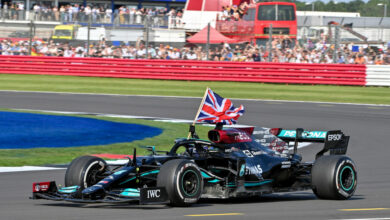McLaren P1 Successor Coming 2024 – Plans To Be Fully Electric In Future
McLaren was firmly put back on the map as a pioneer in high performance supercars, with the 12C and 650S proving to be extremely popular but it was the engineering marvel of the P1 hypercar that really cemented McLaren as back in the game. The plug-in hypercar was built between 2013 to 2015 and you’ll all be pleased to know that the successor to this incredible vehicle is very much in the works as revealed by McLaren’s Track25 plan back in 2018.

Now, two years later, we have a further update on the new P1 descendent – and it appears that it’ll be coming sooner than expected. You’ll still have to wait until 2024 by the looks of things, but this is still a full year earlier than most expected. When McLaren CEO Mike Flewitt was interviewed by Autocar, confirming the vehicle will be a hybrid or an electric vehicle:
We haven’t announced the powertrain. Obviously, looking forward, it will either be hybridised or an EV.
McLaren boffins may already be aware that the motoring giant didn’t have any immediate plans for a fully electric vehicle – mainly due to the excess weight that came with the battery. They instead planned to wait until solid-state battery technology was available, which would make more sense and hopefully open up to the next phase of car battery technology – with longer range and shorter charging times. Flewitt clarified the current limitations using the McLaren 765LT as an example:
I like EVs, I’ve driven them a lot lately and for regular use. They’re responsive, refined and have incredible performance. But the charging times are really restrictive. Take the 765LT as an example. We know a lot of customers are going to take that to the track. If it were an EV, you would be looking at maybe 30 minutes of running time and then plugging it in until the next day. That’s not a persuasive position.
Given these modern-day technological restrictions, there is a strong chance the P1’s successor will be using a split hybrid system with an electronically powered front axle. The rear axle will receive its power from a combustion engine, which will most likely be a hybridised version of the McLaren’s V6. While hybrid vehicles are not exactly light, they are certainly lighter than current fully-electric technology allows.

However, by 2025 – McLaren aims to become 100% all-electric. Mainly because it is clear that this is the direction that the whole industry is moving but also to comply with government regulations across the world, who are pushing for combustion engine bans (especially in cities) within the next 15 years or so. So, in short, McLaren has plenty of time to nail down their solid state battery tech.

For further updates on all things McLaren and specifically the P1’s successor – stick with Grand Tour Nation.



